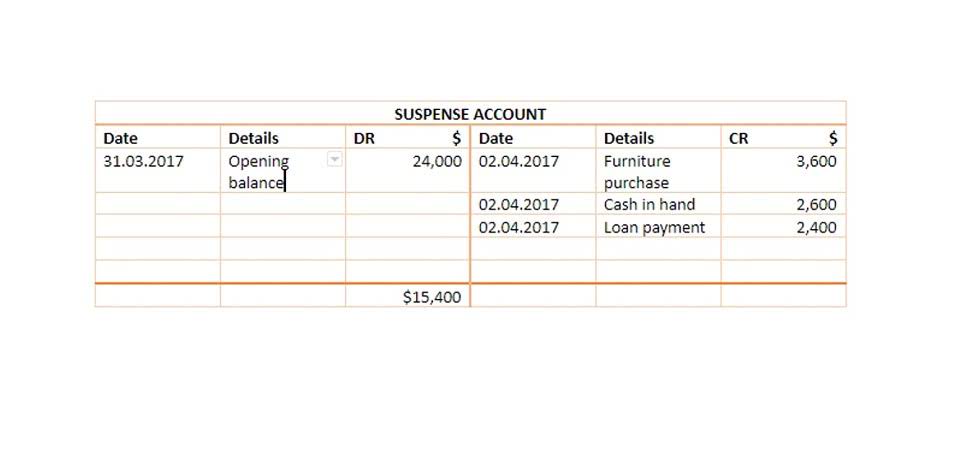
Control accounts are mainly used to help identify errors in the subsidiary ledgers, but the use of them gives a business a number of additional advantages. It’s the account that is used to record all credit transactions made in terms of sales. Further, all the related transactions like cash collected from credit customers, discount allowed, provision recorded, and sales return are recorded in the control account. We can analyze that the total balance in the payable ledger Interior Design Bookkeeping amounts to $345,000 and carried forward balance in the payable control account amounts to the same balance.
Control account example
This is usually a running total that cumulatively adds or subtracts each debit or credit to the previous balance to show the current balance at each point in time. For example, if the sales account balance is transferred, the sales account will be debited, and the sales control account will be credited. ClientWeb is an intuitive, bespoke web portal that provides our debt recovery clients with full visibility and transparency on any account placed with us for recovery – no matter what time of the day. Clients can instantly see live updates of status, outstanding balances and the position within the recovery cycle as well as the ability to drill down to see all actions at account level. Clients can update ClientWeb with any information regarding payments, changes of address or communications with the account holder.

It’s easy to get started
Control accounts provide summary balances that are sufficient for analysing financial reports. The general ledger account that sums the subsidiary accounts is said to control the balances that are reported in the ledger. This makes sense because the subsidiary accounts are not directly reported in the GL. They are summarized and posted to the control account that in turn appears in the GL. In this way, the controlling account really does dictate what appears in the GL and what is reported on the financial statements. Implementing control accounts can be complex, particularly in large organizations with diverse operations.

Relationships with Subsidiary Accounts
- If your accounts don’t match, it’s likely that the subsidiary ledger has the error.
- Subsidiary ledgers, sometimes called sub-ledgers, contain detailed records of individual transactions for specific accounts, such as accounts receivable, accounts payable, or inventory.
- The balance on the accounts receivable control account at any time reflects the amount outstanding and due to the business by customers for credit sales.
- A control account typically follows a structured layout to ensure accurate and efficient recording of all financial processes.
- As you can see from the example, the accounts payable subsidiary ledger balances match the accounts payable control account balance.
This helps to consolidate reporting, give quicker insights, and promote enhanced control and fraud prevention. Control accounts are commonly used for accounts payable and account receivable, which typically experience a high volume of transactions. Control accounts may also be used with other accounts such as inventory, cash, fixed assets, or any other accounts that experiences a larger volume of transactions. The vendor balance for Gus Grass is $0 and the accounts payable balance is $0.

The crux of a control account’s role in financial management is to enable easy cross-verification of data. Control accounts ensure balances and transactions align correctly with the detailed entries in corresponding subsidiary accounts. A retained earnings “control account” is a general ledger account that summarizes and provides a check on the accuracy of all the detailed subsidiary data.
They contain totals instead of amounts relating to individual debtors or creditors. They allow one to see the totals, without getting into too much details from individual accounts. Like the sales ledger account, control accounts are also commonly used for purchase ledgers. Both the sum of the supplier accounts and the purchase ledger control account need to match. The accounts receivable subsidiary ledger does not form part of the double entry bookkeeping process. In a typical bookkeeping system where the control accounts form part of the double entry posting, the accounts receivable control account is used for each of these types of transaction as follows.
- Examples include; accounts receivable, accounts payable, inventory, and fixed assets.
- The details for each control account will be found in a related (but separate) subsidiary ledger.
- If the total of a control account doesn’t match with the sum of the corresponding subsidiary ledger accounts, it indicates that transactions are either missing or duplicated.
- Control accounting helps create streamlined financial reports, and can provide an additional verification step to ensure accuracy.
- In conclusion, control accounts play a significant yet often overlooked role in promoting sustainability within organizations.
- Thus, while the “accounts receivable balance” can report how much the company is owed, the accounts receivable subsidiary ledger can report how much is owed from each credit customer.
- ClientWeb is an intuitive, bespoke web portal that provides our debt recovery clients with full visibility and transparency on any account placed with us for recovery – no matter what time of the day.
- The control account’s balance is frequently reconciled with the total of the subsidiary account balances to ensure accuracy, and that all debits equal all credits.
- More details such as where the money came from, who it came from and the date it was paid appear in the subsidiary ledger.
- The balance column keeps track of the running balance of the control account after each transaction.
- Suppose the closing balance of creditors in the general ledger is valued at $3,45,000 as of December 31, 2021, and the following is the break-up of the balance.
- For example, a company that extends credit to its customers will usually have an accounts receivable control account as well as an accounts receivable subsidiary ledger.
However, if Taylor or anyone else wants to find out the amount that a specific customer still owes for their credit purchases, or when they bought the item, that won’t be shown in the control account. Control accounts are a fundamental accounting technique used to maintain ledger discipline, improve financial reporting efficiency and accuracy and enable strong auditing. Transactions update both the control account and underlying sub ledger for equal amounts.

Mitigating Losses from Errors and Fraud

See why controlling account progress invoicing and receiving partial payments is highly beneficial. The business makes another sale, this time to Customer B. They sell another laptop and a monitor for £800. If the Purchase Ledger Control Account was at zero before the refurbishment, it would now be showing £65,000 as this represents the total owed to the suppliers.


